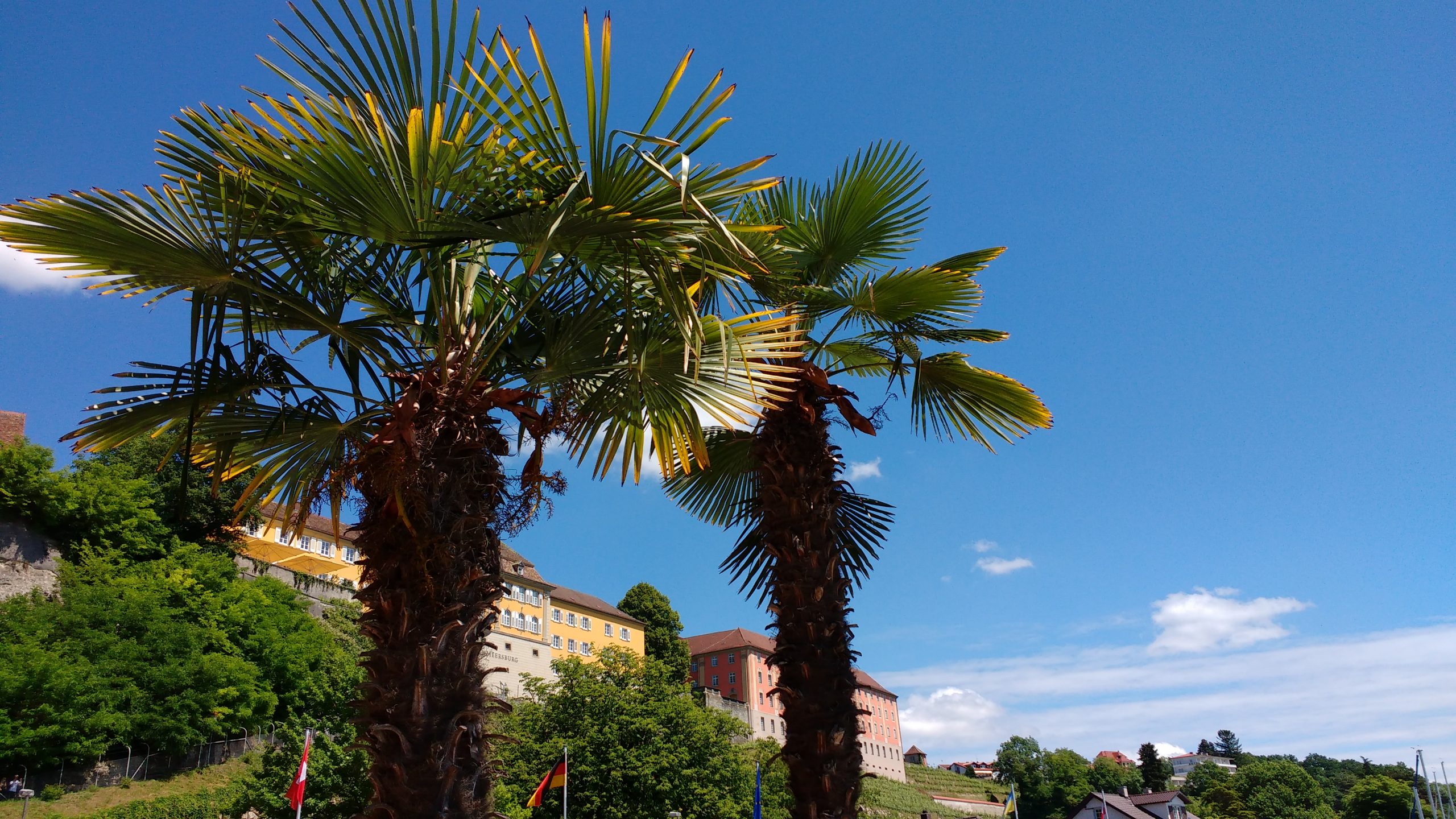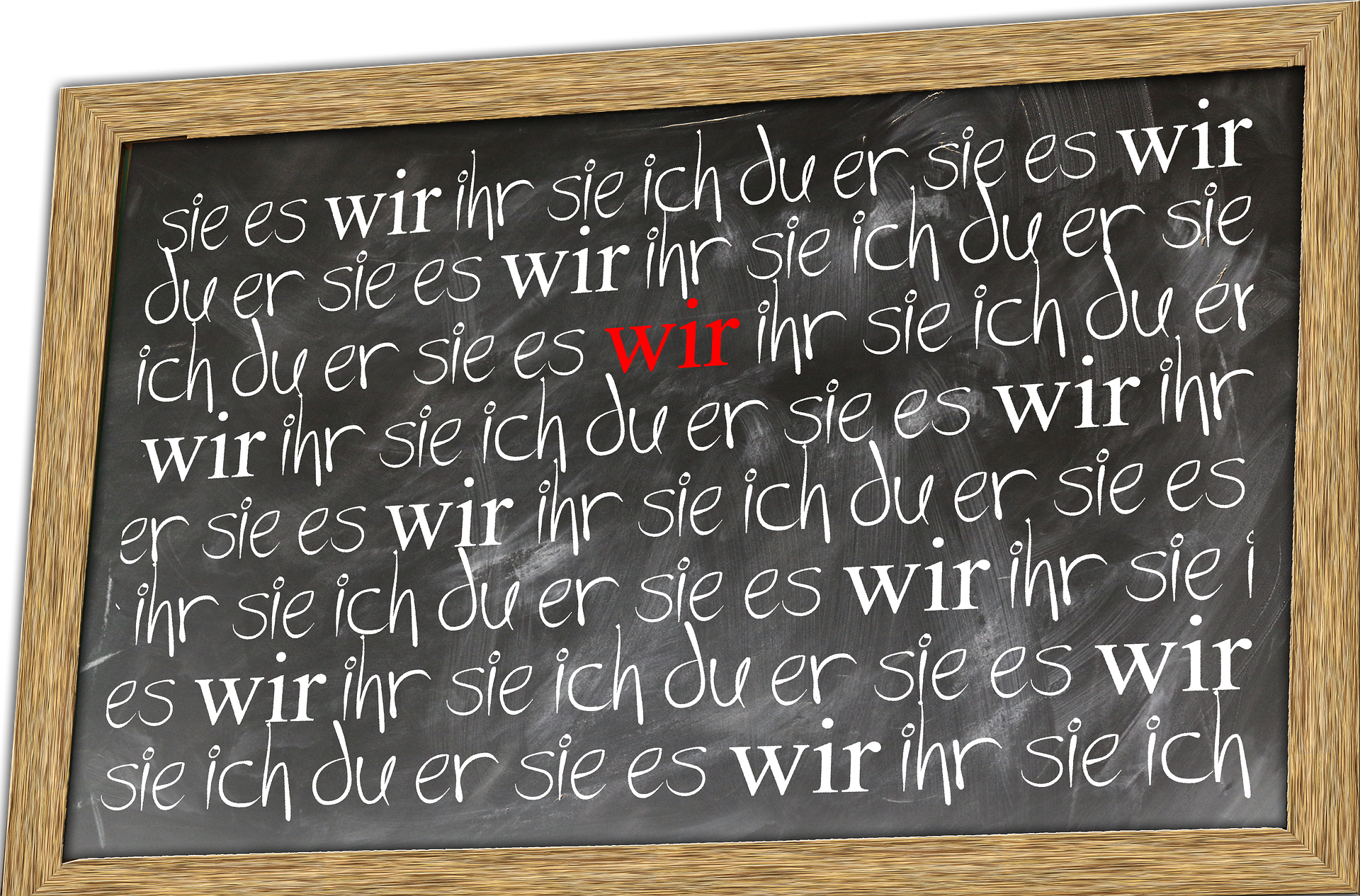Einheit 1.8 (online)
 |
 |
![]() Übung 1
Übung 1
[h5p id=”20″]
![]() Übung 2. Read through the presentation and then answer the questions at the end of it.
Übung 2. Read through the presentation and then answer the questions at the end of it.
[h5p id=”21″]
![]() Grammatik
Grammatik
Conjugation of “sein” and “haben”
These two verbs are used frequently and are irregular verbs. They must be memorized!
| “sein“ | “haben“ | ||
| ich bin | I am | ich habe | I have |
| du bist | you are | du hast | you have |
| er/sie/es ist | he/she/it is | er/sie/es hat | he/she/it has |
| wir sind | we are | wir haben | we have |
| ihr seid | you (pl.) are | ihr habt | you (pl.) have |
| sie/Sie sind | they/you (formal) are | sie/Sie haben | they/you (formal) have |
*ACHTUNG* Just because we now know “I am …” or “I have …” doesn’t mean we can just translate from English into German. One of the biggest mistakes that language learners make is to think you can just translate from one language into the other.
For example: How are you? I am good.
You may want to say:
Wie bist du? Ich bin gut.
This does NOT work in German. Remember what we learned in 1.1 and 1.5:
Wie geht es dir? Mir geht es gut.
You will learn other expressions like this through out the book.

![]() Grammatik
Grammatik
Personal Pronouns
Personal Pronouns refer to the person or thing which performs the action expressed by the verb. Pronouns stand in for nouns when it is clear who is being talked about. For example, when you want to talk about a person without repeating their name, you use a personal pronoun. You have already seen all these pronouns used in sentences.
| ich | I |
| du | you (informal singular) |
| er/sie/es | he/she/it |
| wir | we |
| ihr | you (informal plural) |
| sie | they |
| Sie |
you (formal singular & plural) |
Beispiele:
Was sprichst du? Ich spreche Englisch und Deutsch.
Joaquin kommt aus Peru. = Er kommt aus Peru.
Olena ist Ukrainerin und Kanadierin. = Sie ist Ukrainerin und Kanadierin.
![]() Übung 3
Übung 3
[h5p id=”22″]
![]() Übung 4
Übung 4
[h5p id=”23″]
![]() Grammatik
Grammatik
Conjugation of Verbs (1)
Here is a list of some of the verbs we have used so far in Einheit 1. Please begin to practice and memorize these verbs. Notice anything similar about the endings of the verb stem? You can click on the infinitive forms of the verbs to see what their English translation would be.
| Pronomen | kommen | wohnen |
leben |
heißen |
sprechen |
| ich | komme | wohne | lebe | heiße | spreche |
| du | kommst | wohnst | lebst | heißt | sprichst |
| er/sie/es | kommt | wohnt | lebt | heißt | spricht |
| wir | kommen | wohnen | leben | heißen | sprechen |
| ihr | kommt | wohnt | lebt | heißt | sprecht |
| sie/Sie | kommen | wohnen | leben | heißen | sprechen |
*ACHTUNG*
The underlined portion of the infinitive is the “verb stem”. The process of making sure that the verb and pronoun correspond is called conjugation.
![]() Übung 5. Click on the correctly conjugated verb.
Übung 5. Click on the correctly conjugated verb.
[h5p id=”24″]
![]() Übung 6
Übung 6
[h5p id=”25″]
![]() Wortschatz in Quizlet:
Wortschatz in Quizlet:
![]() Take Quiz 4 on Canvas.
Take Quiz 4 on Canvas.
Extra Practice (optional):
![]() Video Serie – Nicos Weg
Video Serie – Nicos Weg
If you want extra practice on “languages”, click on the link and watch the video. Then click on “start” under the video and do the exercises.
Media Attributions
- Schaf ohne Locken
- star
- light-bulb
- board-1527805_1920
- check mark
- play
to be
to have
to come
to live
to live
to be called
to speak
